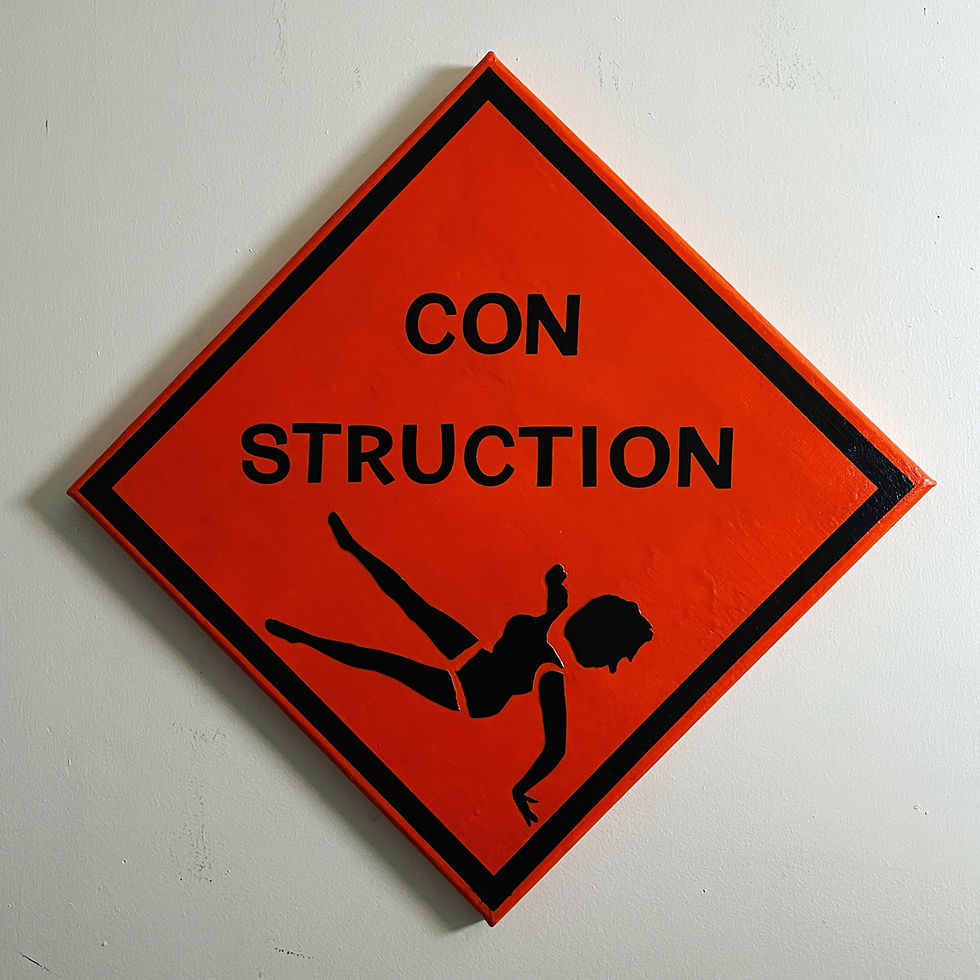Perfect Places by Cassandra Cunningham
- Laura Thipphawong
- Jun 19
- 2 min read
Based in Toronto, Canada
Perfect Places, Oil on Canvas 2025, 34 X 34

Memory is tidal, often ebbing and flowing in a constant state of flux and change. The meaning of a landscape is often established through memory or a collective understanding of the connection people share with the land they live on. Throughout art history, landscape painters have often conveyed narratives of perfect places, neglecting the constant change and marks left upon them by society's activity. I want to disrupt that standard through investigating what a comforting or perfect scene looks like, and infusing the painting with vibrant reality. Life is constantly moving and changing, yet we find solace in the chaos. Thus, I wanted to create a piece showing the change and distortion occurring on land as time passes, happening continuously as each second goes by, challenging the idea of a picture-perfect place.
By investigating what a comforting scene looks like, I wanted to depict a vibrant representation of the tidal relationships we have with land. Land defines our identities, and becoming mindful of our place on it requires both introspection and knowledge acquisition. We return in waves to the land surrounding us, expecting it to provide sustenance without understanding its history or how the exploitation of land has shaped the way we view the world. Whether it be building oil pipelines or tearing down forests, we enter a transactional relationship with land that bleeds into how we, in turn, treat people, as we enact upon nature what we feel is necessary to sustain our lives. We believe that land is grounding us, but it is moving and changing as much as we are. We hold responsibility for the changes we enact on the land, and our impact is permanent.
I used soft drybrushing techniques to explore how human presence in spaces results in invisible marks and changes, often only seen or considered when we use memory to reflect on the meaning of a landscape and how it has changed over time. As we revisit sites that once meant a great deal to us, we finally notice these small, compounding changes only after much time has passed. Soft drybrushing techniques are contrasted by heavier paint applications in busier areas of the painting, creating a liminality between presence and absence in the space. I have always felt drawn to the infallibility of memory and how our perspective defines all things, from the land we stand on to the things we create. I believe it is impossible to attribute inherent meaning to anything, and instead, we construct and find the meaning in our lives using our point of view. It is important to me to explore and reflect on our relationships to things we often take for granted, and to reach beyond the idealization of a perfect place or perfect image.
Once we let go of perfectionist ideas that seem motivational, but are truly limiting, I believe there is power in trying to explore the interest of the everyday. Reflecting on personal experience not only creates strong artwork but also allows you to find new pieces of yourself while potentially helping others articulate sentiments they share with you.



